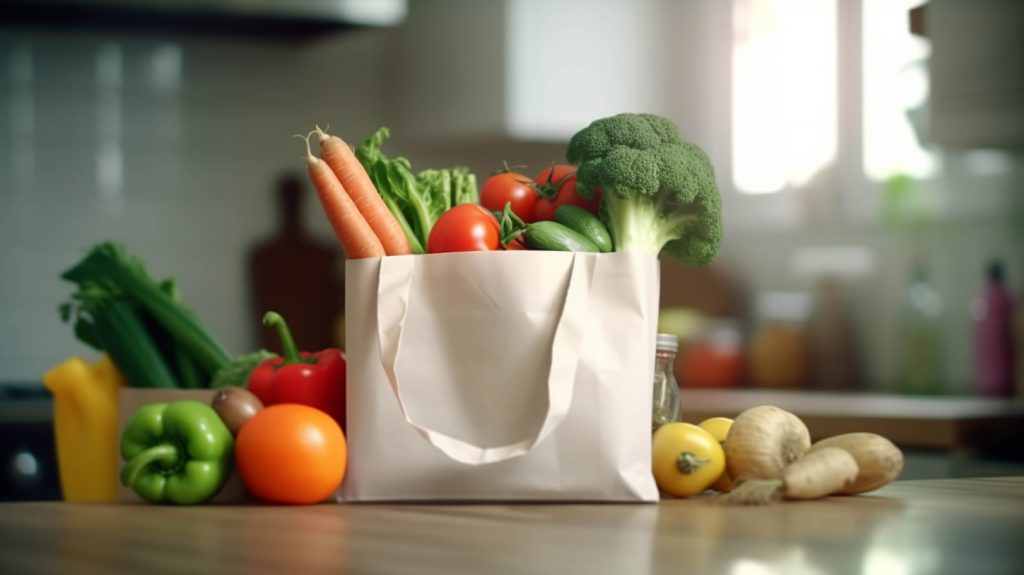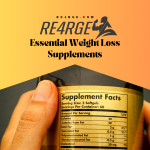Losing weight is a journey that’s as much about understanding your food as it is about eating less or moving more. Controlling what you eat—meaning being mindful of portion sizes, ingredients, and how food is prepared—plays a pivotal role in achieving sustainable weight loss. This isn’t about restriction or fear; it’s about empowering yourself with knowledge to make choices that align with your goals. Below, we’ll explore why this control is essential, highlight the sneaky ways added fats and ingredients from restaurants and food manufacturers can derail progress, and provide practical, non-intimidating strategies to take charge of your diet. Let’s dive in with a positive mindset, backed by science and practical resources.
Why Controlling Your Food Intake Matters for Weight Loss
- Calorie Balance is the Foundation
Weight loss boils down to a simple principle: consuming fewer calories than you burn. However, it’s not just about eating less—it’s about eating smart. Controlling your food intake allows you to manage your calorie deficit effectively without feeling deprived. According to the Mayo Clinic, a sustainable weight loss of 1–2 pounds per week typically requires a deficit of 500–1,000 calories per day. By choosing what goes into your meals, you can ensure you’re eating nutrient-dense foods that keep you full longer, making that deficit easier to maintain. - Hidden Calories Add Up Fast
Restaurants and food manufacturers often add fats, sugars, and other ingredients to enhance flavor, texture, or shelf life. These additions can significantly increase calorie counts without adding nutritional value. For example, a seemingly healthy restaurant salad can pack 800+ calories due to dressings, cheeses, or croutons. By controlling your food— whether cooking at home or making informed choices when eating out—you can avoid these hidden calorie traps. - Nutrient Quality Supports Health and Satiety
Not all calories are equal. Foods high in fiber, protein, and healthy fats (like whole grains, lean meats, or avocados) keep you fuller longer and provide essential nutrients. Processed foods or restaurant dishes often prioritize taste over nutrition, using refined carbs or unhealthy fats that leave you hungry soon after eating. Controlling your food lets you prioritize whole, unprocessed ingredients that support both weight loss and overall health. - Mindful Eating Builds Long-Term Habits
Taking charge of your food fosters mindfulness, helping you tune into hunger and fullness cues. This awareness prevents overeating and builds sustainable habits. A 2018 study in the Journal of Nutrition Education and Behavior found that mindful eating practices, like planning meals and checking ingredient lists, were associated with better weight management outcomes. - Avoiding the “Health Halo” Trap
Many packaged foods and restaurant menus market items as “healthy” (think “low-fat” yogurt or “grilled” entrees), but these can still be loaded with calories, sodium, or sugars. Controlling your food means you can see past marketing claims and focus on what’s actually in your meal.
The Sneaky Culprits: Added Fats and Ingredients

Restaurants and food manufacturers aren’t trying to sabotage your health—they’re often just prioritizing flavor, cost, or convenience. However, their choices can make weight loss harder. Here’s a look at common additions and why they matter, without the scare factor:
- Added Fats
- Restaurants: Dishes like grilled chicken or stir-fries may sound healthy, but they’re often cooked in generous amounts of butter, vegetable oil, or creamy sauces to boost flavor. For example, a restaurant stir-fry can contain 200–300 extra calories from oil alone.
- Manufacturers: Packaged foods like frozen meals, snacks, or even “healthy” granola bars often include hydrogenated oils or palm oil to improve texture or shelf life. These fats add calories quickly—a single tablespoon of oil is about 120 calories.
- Why It Matters: Fats are calorie-dense (9 calories per gram vs. 4 for carbs or protein), so small amounts can tip your calorie balance. They’re not “bad”—healthy fats like olive oil are great in moderation—but uncontrolled portions can derail progress.
- Resource: The American Heart Association’s guide to fats (heart.org) explains the difference between healthy and unhealthy fats and how to incorporate them wisely.
- Added Sugars
- Restaurants: Smoothies, salads with candied nuts, or “light” dressings often contain added sugars to enhance taste. A chain restaurant smoothie can have 50+ grams of sugar, equivalent to a soda.
- Manufacturers: Breakfast cereals, flavored yogurts, and even savory items like pasta sauces often include hidden sugars (listed as corn syrup, dextrose, or cane sugar). A single serving of flavored yogurt might have 15–20 grams of added sugar.
- Why It Matters: Added sugars contribute empty calories and can spike hunger by causing blood sugar swings. The Dietary Guidelines for Americans recommend limiting added sugars to less than 10% of daily calories (about 50 grams on a 2,000-calorie diet).
- Resource: The FDA’s Nutrition Facts Label guide (fda.gov) helps you spot added sugars on labels and make informed choices.
- Sodium and Flavor Enhancers
- Restaurants: High-sodium ingredients like soy sauce, cheese, or broths are common in dishes like soups or fast-food burgers. A single fast-food meal can exceed 2,000 mg of sodium, nearly the daily limit.
- Manufacturers: Processed foods like canned soups, chips, or frozen dinners use sodium to preserve and enhance flavor. A can of soup might have 800–1,000 mg per serving.
- Why It Matters: While sodium itself doesn’t add calories, it can cause water retention, making you feel bloated and masking weight loss progress on the scale. It also makes foods hyper-palatable, encouraging overeating.
- Resource: The CDC’s sodium reduction tips (cdc.gov) offer practical ways to cut back without sacrificing flavor.
- Refined Carbs and Fillers
- Restaurants: Bread baskets, fries, or white rice sides are often refined carbs that lack fiber and spike hunger. A side of fries can add 300–500 calories.
- Manufacturers: Packaged snacks, white breads, or instant noodles use refined flours that digest quickly, leaving you hungry sooner. A small bag of chips might seem harmless but can pack 150–200 calories with little satiety.
- Why It Matters: Refined carbs provide quick energy but lack the staying power of whole grains, making it harder to stay in a calorie deficit.
- Resource: Harvard’s Nutrition Source (hsph.harvard.edu) explains how to swap refined carbs for whole grains like quinoa or brown rice.
How to Take Control of Your Food (Without Stress)
Controlling your food doesn’t mean you need to cook every meal from scratch or avoid eating out. It’s about making informed, balanced choices. Here are practical, non-intimidating tips to get started:
- Cook More at Home (Even Simply)
- Start with easy meals like grilled chicken with steamed veggies or a salad with olive oil and lemon dressing. You control the oil, salt, and portions.
- Use resources like the MyPlate website (myplate.gov) for beginner-friendly recipes and portion guides.
- Batch-prep ingredients (like chopped veggies or cooked grains) to make cooking faster.
- Read Labels Like a Pro
- Check Nutrition Facts for serving size, added sugars, and sodium. Aim for products with minimal ingredients you recognize.
- Apps like Yuka or Fooducate scan barcodes and break down ingredient lists for you.
- The FDA’s “How to Understand and Use the Nutrition Facts Label” (fda.gov) is a great starting point.
- Navigate Restaurants Wisely
- Ask for dressings or sauces on the side, and request grilled or steamed options instead of fried.
- Check menus online beforehand—many chains post nutrition info. For example, a Chipotle burrito bowl with veggies and lean protein can be under 500 calories if you skip high-calorie toppings like sour cream.
- The Academy of Nutrition and Dietetics (eatright.org) offers tips for healthier dining out.
- Balance, Don’t Ban
- You don’t need to avoid fats, sugars, or restaurant meals entirely. Include small amounts of your favorites (like a drizzle of olive oil or a weekly treat) to keep your diet enjoyable and sustainable.
- A 2020 study in Obesity found that flexible dieting (allowing treats in moderation) led to better long-term weight loss than rigid restriction.
- Stock Up on Nutrient-Dense Staples
- Keep your kitchen stocked with whole foods like eggs, beans, frozen veggies, and whole grains. These are affordable, versatile, and naturally low in hidden additives.
- Websites like Budget Bytes (budgetbytes.com) offer cheap, healthy recipes that minimize processed ingredients.
- Learn to Spot Marketing Tricks
- Terms like “natural,” “low-fat,” or “organic” don’t always mean low-calorie or healthy. Check the calorie count and ingredients to confirm.
- The Mayo Clinic’s guide to food marketing (mayoclinic.org) helps decode labels and avoid “health halo” traps.
Why This Approach Works (And Isn’t Scary)
Controlling your food isn’t about perfection or deprivation—it’s about clarity and choice. By understanding what’s in your meals, you can enjoy food while staying on track. Restaurants and manufacturers aren’t the enemy; they’re just catering to what sells—flavorful, convenient food. Armed with knowledge, you can make small tweaks (like swapping creamy dressings for vinaigrette or choosing whole-grain bread) that add up to big results. The goal is progress, not restriction.






